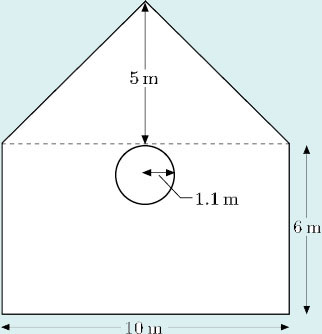Try some yourself
Question 1
Find the area of a circle of (a) radius 8 cm, and (b) radius 15 m.
Question 2
Calculate the areas of the following shapes:
Question 3
Use your answers to the previous question to find the area of turf needed for the proposed lawn shown below, which has a circular flowerbed in the middle. Round your answer to the nearest square metre.

Question 4
A manufacturer produces a patio kit consisting of 28 paving slabs which are shaped so that they fit together to form rings, as shown. The outside edge of each ring is a circle, and all three circles have the same centre. Circles with the same centre are called concentric circles. The slabs are of three sizes, one for each ring of the patio. All of the slabs in a particular ring are identical.

The radii of the three circles are 0.4 m, 0.8 m and 1.2 m.
Making appropriate assumptions, calculate which of the three types of slab is the heaviest and which the lightest.
Hint
Try breaking the problem in question 4 down into steps and considering what you know about what you want to find out. You know the radii of the circles, so can find the area of each circle. That should help you to find the area of each ‘ring’ of slabs. Then count how may slabs are in each ring and use that to work out the area of each slab.










